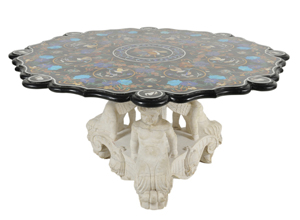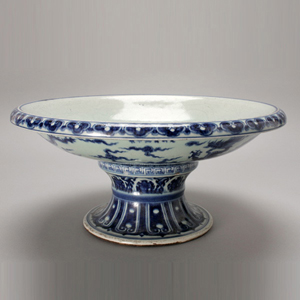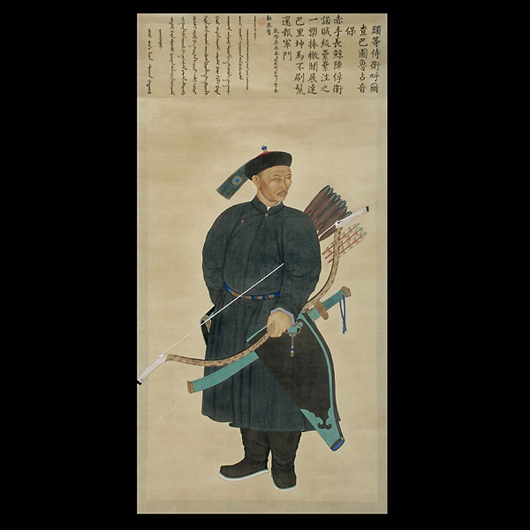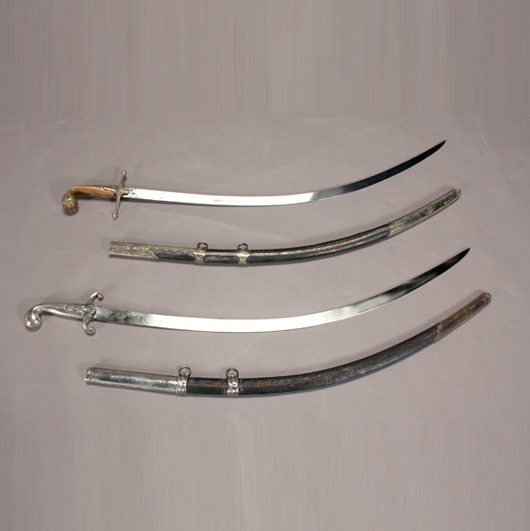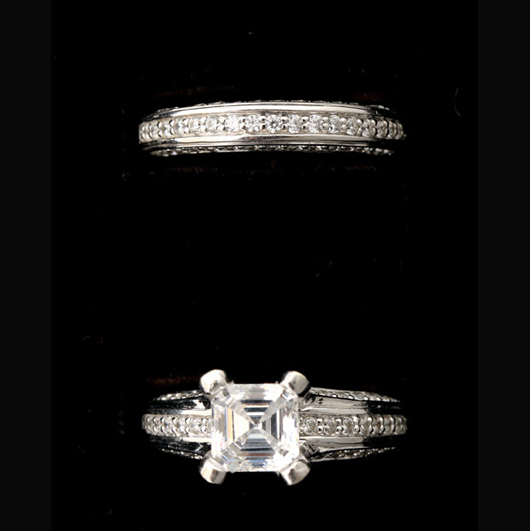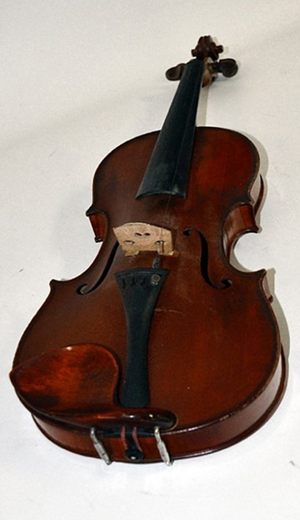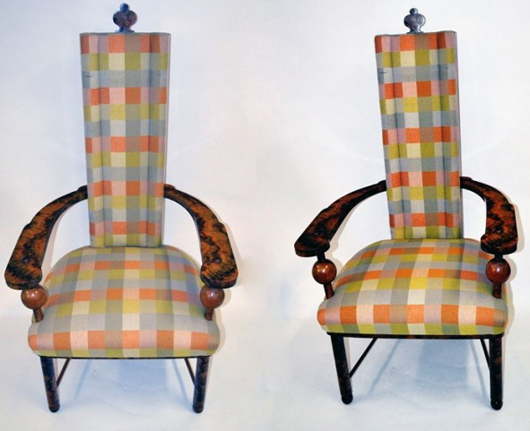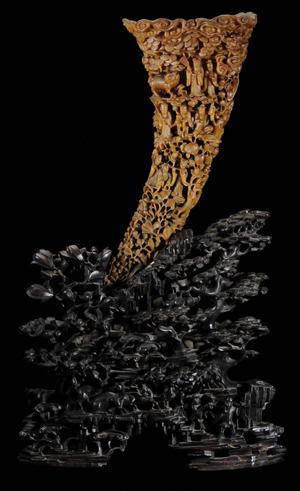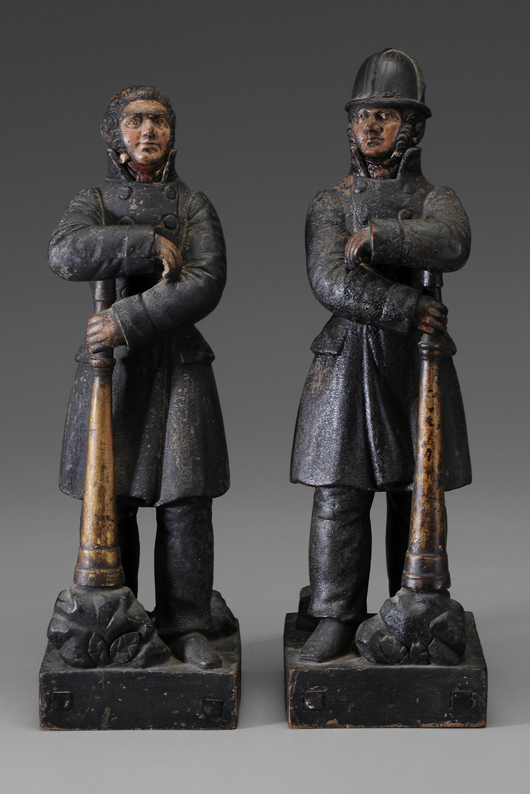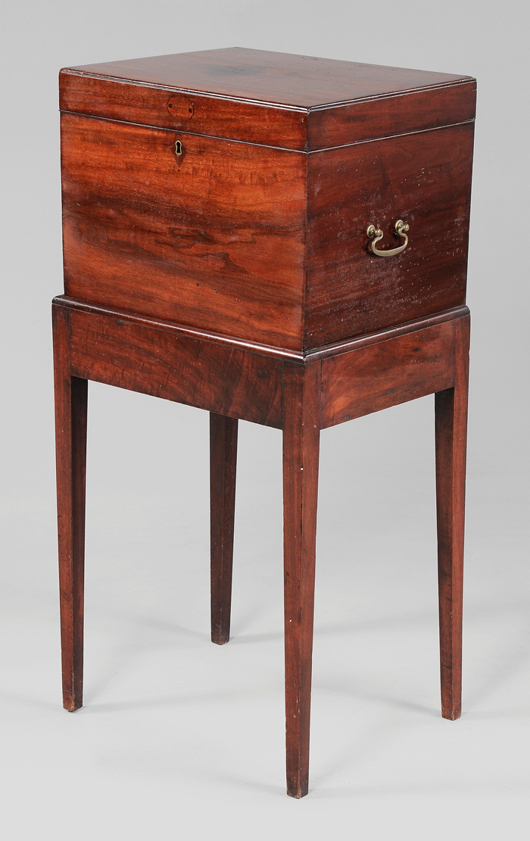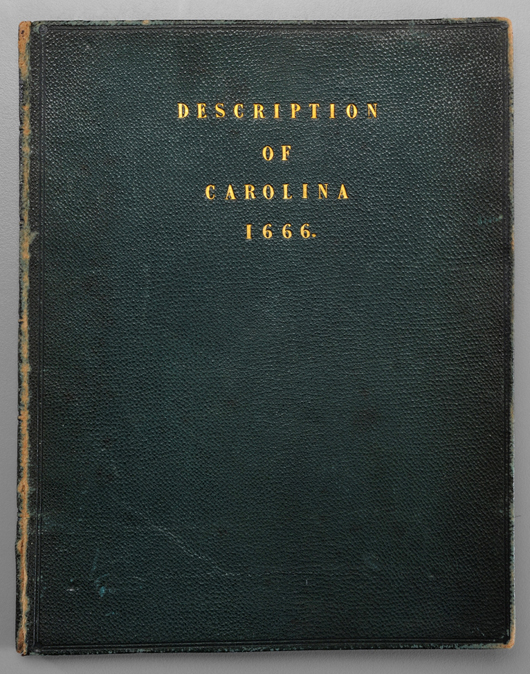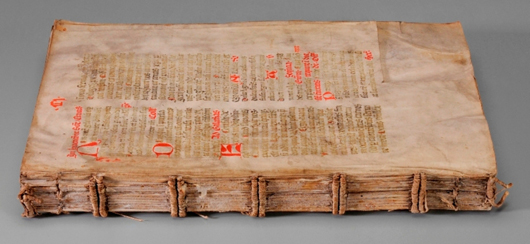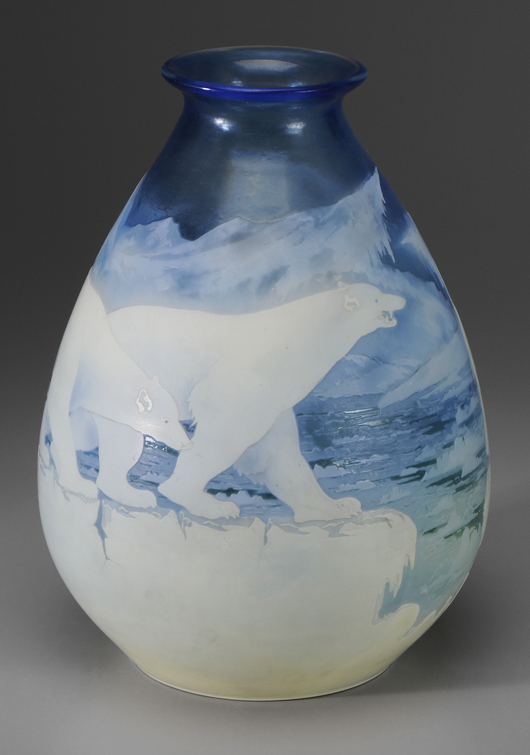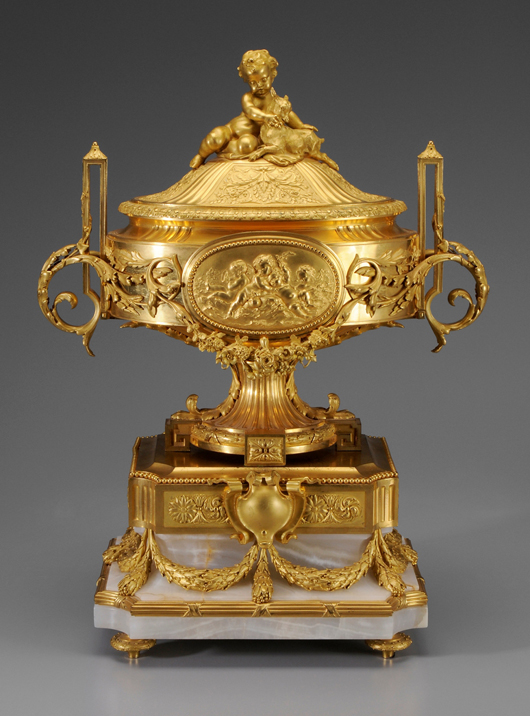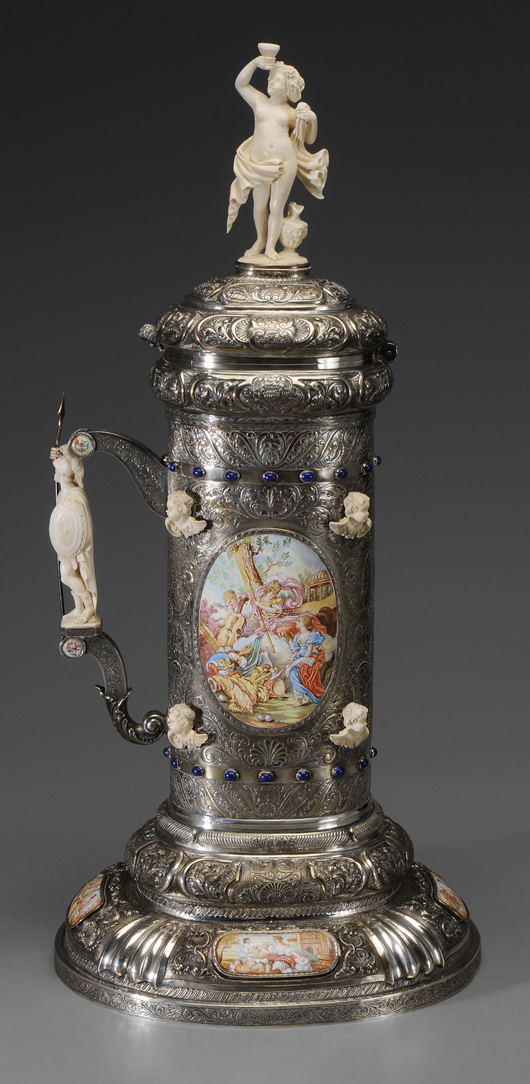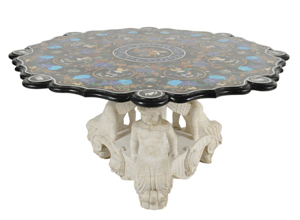
Semi-precious stone-inlaid table. Est. $12,000-$18,000. Morton Kuehnert image.
HOUSTON – The embellishments that were so much a part of the lifestyles of the rich and famous of the past three centuries will be presented at auction Oct. 23rd at Morton Kuehnert Auctioneers & Appraisers. The sale begins at 11 a.m. Central time, and Internet live bidding will be provided by LiveAuctioneers.com.
More than 400 lots of exquisite clocks, chandeliers, torchieres, furniture, decorative art, sterling, rugs and contemporary jewelry will cross the auction block, including Asian art, which is in such high demand with collectors worldwide. One of the most interesting pieces in the sale is Lot 364, a Southeast Asian rock crystal gilt bronze and jewel-encrusted covered vessel, 7 inches by 4 inches in diameter, estimated at $2,500-$4,500. It is heavily encrusted with crisply cast gilt bronze mounts featuring nautilus shells and inset with 22 emeralds (old mine cut).
Lot 106, a beautifully painted Chinese four-panel screen measuring 145 inches by 97 inches, is estimated at $3,500-$4,500. Lot 129, a pair of gilded and decorated Japanese chargers from the Meiji Period (1868-1912), are estimated at $2,500-$3,500. Lot 134 is a pair of Canton Famille Rose octagonal bough pots from the late 19th Century. The estimate is $3,000-$6,000.
A fine array of clocks and garnitures will be offered. Lot 5, a Louis XVI three-piece bronze doré and rouge royale clock garniture, circa last half 19th century, is estimated at $12,000-$15,000. Lot 307, a charming late 19th century French bronze and enameled double drum carriage clock is up for auction at an estimate of $400-$600. It has enameled panels, one depicting two cherubs, one depicting a church and bridge by a mountain lake and one depicting two large haystacks.
Lot 11, an impressive late 19th century Continental painted and gilded bronze five-piece clock garniture, with works by clockmaker Japy Frères, is sure to be a showstopper. It is estimated at $3,500-$5,000. The beauty of the set is enhanced with the stunning blue background and metallic leaves. It includes a tall urn-form clock, two urn-form five-light candelabra, and two vases. All pieces having a gilt bronze foliate scroll base with four feet and all but the clock with a gilt bronze gadrooned domed top.
One of the centerpieces of the auction is Lot 160, a Raingo Frères bronze doré and patinated bronze figural mantel clock, circa 1850, featuring two ebony patinated seated figures—Justice and a maiden—and the entire clock lavishly decorated with scrolling acanthus leaves, floral and fruit and architectural elements. The auction estimate is $4,500-$6,000.
Lot 226, a 19th Century Larzet bronze doré and patinated bronze figural mantel clock, features a playful motif of a boy holding the horn of a goat on top of a rocky mound, resting on a white marble plinth and base. The name LARZET, 12 RUE DE LA CONCORDE, is stamped on the front and the inside back plate stamped LARZET A PARIS at the top. The auction estimate is $2,500-$3,500.
In the furniture section, a stunning octagonal semi-precious stone inlaid table with a white Carrara marble base is expected to be a top lot. The eight lobes are connected with serpentine sides and a stepped-ogee edge on a black agglomerate stone of turquoise, lapis lazuli and abalone flowers, on agate vines with malachite leaves and olives. The top is supported by a carved white Carrara marble base of three cherubs. The auction estimate for Lot 15 is $12,000-$18,000.
Sure to capture attention is Lot 1, a pair of elegant Louis XVI style giltwood mirrors with radiating leaves and bell flowers. The crest of the en chapeau cornice continues with bellflower garlands and foliate over the mirror plate, terminating with glorious scrolls of acanthus bellflowers. The bases of the mirrors are flanked by scrolls with draping bellflowers. Auction estimate is $8,000-$10,000.
Lot 150, an unusual and finely crafted early 19th century George III flame mahogany demilune sideboard will be another favorite. The mahogany top with ebony stringer and banded edge is supported by a body with two doors, three drawers and a half-moon tambour panel opening. Auction estimate is $4,000-$6,000.
Lot 187 is an early 19th century George III walnut slant-front secretary with walnut veneer and molded cornice, supported by two burled walnut mirrored locking doors with banded side panels and four adjustable shelves. Auction estimate is $5,000-$7,000. Below the door is a pair of pull-out candle stands above the slant-front desk with a green tooled leather writing surface, with four cubby holes, four drawers and a locking door.
Lot 294 is a graceful Italian white Carrara marble statue of a finely rendered maiden with a halo of flowers and doves perched on her hand and arm, all on a black marble base. Auction estimate is $6,000-$8,000.
A 76-piece set of 1895 “Chantilly” patterned Gorham Sterling flatware, Lot 388, manufactured in Providence, R.I., is a beautiful six-piece service for eight, and comes with a number of serving pieces. Auction estimate is $2,500-$3,500.
Lot 49, an Irish Donegal wool pile rug in excellent condition, circa 1950s, uniquely blends Renaissance and French Aubusson designs on a wool foundation. It measures 10ft. 5in. by 11 ft. and is estimated at $3,500-$4,000.
Lot 14 is a pair of Louis XVI-style patinated bronze and cloisonné five-light appliqués/sconces that will make a statement in any space. Auction estimate is $4,500-5,500.
The jewelry selection is breathtaking by anyone’s standards. Lot 60 is an 18K white gold emerald and diamond necklace, with 621 diamonds equaling 26.18 carats and highlighted by 13 natural emeralds. Auction estimate is $60,000-$90,000. Lot 63 is a gentleman’s Patek Philippe wristwatch for Tiffany & Co., estimated at $6,000-$11,000 and an entire collection of cufflinks includes a pair of 18K gold Buddha cufflinks, peanuts, saxophones, acorns and sports cars. There are designs featuring opals, gold and diamonds, carnelians and gold, chrysoprase, sterling silver and black mother-of-pearl by David Yurman. Additionally, there is a pair of white gold and black diamond tuxedo cufflinks and studs. The cufflinks will be sold by the pair.
Finally, a platinum diamond and sapphire ring, Lot 69, with a 2-carat marquise diamond and four marquise blue sapphires, is ready to grace the hand of an eager owner. Auction estimate is $5,000-$8,000.
Some interesting paintings will be offered on October 23, including Lot 36, Umberto Argyros’ oil on canvas The Mirror, estimated at $2,500-$3,500. Lot 48 is a whimsical oil on linen by artist Rebecca Campbell. Titled The Match, it is estimated at $4,000-$6,000. Lot 37 is Dimitrios Briskinis’ The Doll, an oil on canvas estimated at $2,500-$3,500. Lot 205, Raul Coronel’s Jeweled Brilliant Sun, is estimated $3,000-$4,000.
For additional information, call 713-827-7835 or e-mail inquiry@mortonkuehnert.com.
View the fully illustrated catalog and sign up to bid absentee or live via the Internet at www.LiveAuctioneers.com.
# # #
ADDITIONAL LOTS OF NOTE







